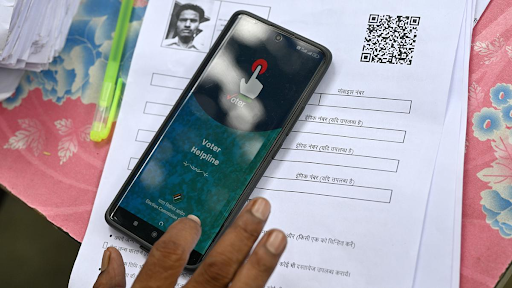Description

Copyright infringement not intended
Picture Courtesy: https://www.newsonair.gov.in/governments-flagship-scheme-swachh-bharat-mission-helped-reduce-infant-and-child-mortality-in-the-country/
Context:
The Swachh Bharat Mission (SBM) was launched by the Prime Minister in 2014 to eliminate open defecation in India.
About the Swachh Bharat Mission (SBM)
- The Prime Minister launched the Swachh Bharat Mission on 2nd October 2014 to achieve universal sanitation coverage and make India "open-defecation free".
- The initiative intends to enhance the health and well-being of millions of Indians by building over 100 million toilets in rural regions, creating a global standard for community-driven sanitation reform.
- In rural areas, "SBM - Gramin" is funded and monitored by the Ministry of Jal Shakti (earlier Ministry of Drinking Water and Sanitation).
- "SBM - Urban" is overseen by the Ministry of Housing and Urban Affairs.
- The government provided subsidies for the construction of toilets.

Swachh Bharat Mission – Grameen: Phase I (2014–2019)
- The Swachh Bharat Mission-Grameen (SBM-G) Phase I was India's largest behavioural change movement that focused on sanitation efforts and public health.
- It aimed to end open defecation through awareness campaigns, education, and infrastructure development.
- The initiative combined with governmental and community engagement has improved hygiene and health, particularly in rural areas where sanitation facilities were lacking.

Swachh Bharat Mission – Grameen: Phase II (2019–2025)
- Swachh Bharat Mission – Grameen: Phase II aims to maintain ODF status and manage waste by 2025, focusing on "Sampoorn Swachhata" or complete cleanliness.
- It includes creating ODF Plus villages to improve sanitation standards.
- With an investment of Rs. 1.40 lakh crores, this phase integrates government schemes to enhance sanitation infrastructure.
- As of September 2024, more than 5.87 lakh villages have achieved ODF Plus status;
-
- Over 3.92 lakh implementing solid waste management systems
- Over 4.95 lakh establishing liquid waste management systems.
- This phase saw the construction of over 11.64 crore household toilets and 2.41 lakh community sanitary complexes.
 Swachh Bharat Mission – Urban
Swachh Bharat Mission – Urban
- The Swachh Bharat Mission (Urban) aims to achieve 100% Open defecation-free status, ensure scientific Solid Waste Management, and drive behaviour change through a "Jan Andolan" movement.
- As of September 2024, more than 63 lakh households and 6.3 lakh public toilets have been constructed.

The Nature, World’s Leading Science Magazine, on The Swachh Bharat Mission (SBM)
- The Swachh Bharat Mission (SBM) has reduced infant and under-five mortality rates, saving 60,000-70,000 infant lives annually.
- Increased toilet access under SBM led to improved child survival outcomes.
- Toilet access and child mortality have a strong inverse association.
- Every 10% increase in district-level access to sanitation facilities resulted in a reduction in district-level infant and child mortality by 0.9 points and 1.1 points on average.
- SBM combines toilet construction with investments in Information, Education, and Communication (IEC) and community engagement has reduced exposure to faecal-oral pathogens, contributing to lower incidences of diarrhoea and malnutrition.
Significance of Swachh Bharat Mission
- More than 100 million toilets were constructed to provide access to sanitation for millions of rural households.
- The ODF status improved hygiene and public health, particularly in underserved areas.
- Studies have linked SBM to a significant reduction in infant mortality and under-five mortality rates by improving hygiene and reducing exposure to diseases like diarrhoea and malnutrition.
- The campaign also emphasised behavioural change through Information, Education, and Communication (IEC) efforts, leading to a lasting shift in sanitation practices across India.
- The construction of household toilets in rural areas, enhanced women's dignity and safety, reducing the need for them to travel far for defecation.
- In Phase II (2019-2025), the mission expanded to address waste management.
- The SBM has become a global model of community-driven sanitation reform, highlighting how large-scale improvements can be achieved quickly through collective action and government initiative.
Challenges of the Swachh Bharat Mission
- The mission aims to get ODF status, but sustaining this status remains a challenge.
- The transition from ODF to ODF Plus is complex, with many rural and urban areas lacking adequate waste treatment infrastructure, leading to improper disposal and environmental concerns.
- Water scarcity in some areas makes it difficult to maintain toilets and sanitation facilities, resulting in a decline in toilet usage.
- Sanitation worker welfare is also a concern, with harsh working conditions often overlooked.
- The urban-rural divide remains a challenge, particularly in slums and informal settlements.
- Behavioural challenges have limitations, with some communities resisting toilet use, especially in regions where open defecation is the traditional practice.
- Ensuring proper safety measures, fair wages, and better working conditions is essential for the long-term sustainability of the mission.
 Way Forward for Swachh Bharat Mission
Way Forward for Swachh Bharat Mission
- There is a need to develop comprehensive waste management infrastructure in ODF Plus Villages.
- Technological innovations, such as low-cost waste treatment systems can address waste management challenges and ensure the continued use of sanitation facilities.
- Integrating SBM with other government programs like the Jal Jeevan Mission ensures access to water for sanitation, improving hygiene and usability of facilities.
- The welfare of sanitation workers must be prioritised through better working conditions, safety gear, and dignified environments.
- Strengthening local governance structures and strengthening partnerships with NGOs and corporations can ensure accountability and long-term success.
- Addressing sanitation challenges in urban areas, particularly in slums, requires targeted strategies, modernising waste management systems, and urgent attention to slum sanitation projects.
Must Read Articles:
SWACHH BHARAT MISSION
Source:
Indian Express
Wikipedia
Webonlineca
National Center for Biotechnology Information
|
PRACTICE QUESTION
Q. Critically analyse the impact of the Swachh Bharat Mission (SBM) on public health and sanitation infrastructure in rural India. What are the mission's primary successes and limits in terms of open defecation reduction and hygiene practice improvement? (250 Words)
|








 Swachh Bharat Mission – Urban
Swachh Bharat Mission – Urban
 Way Forward for Swachh Bharat Mission
Way Forward for Swachh Bharat Mission






